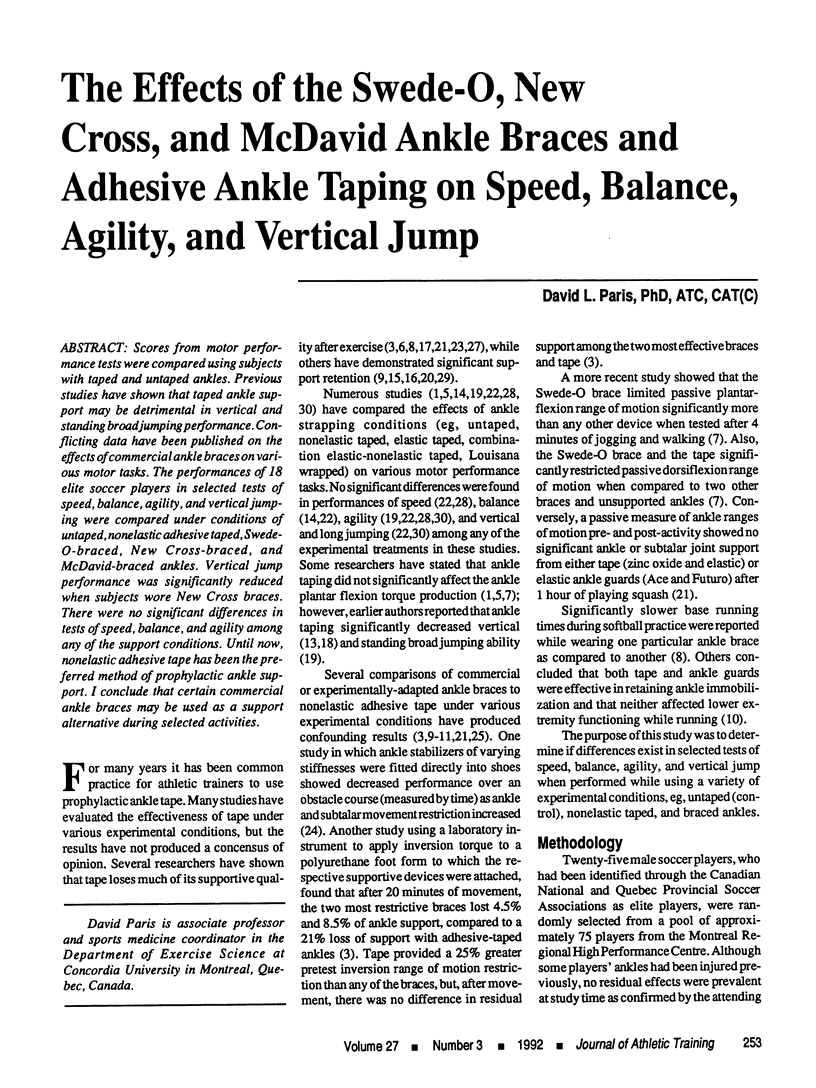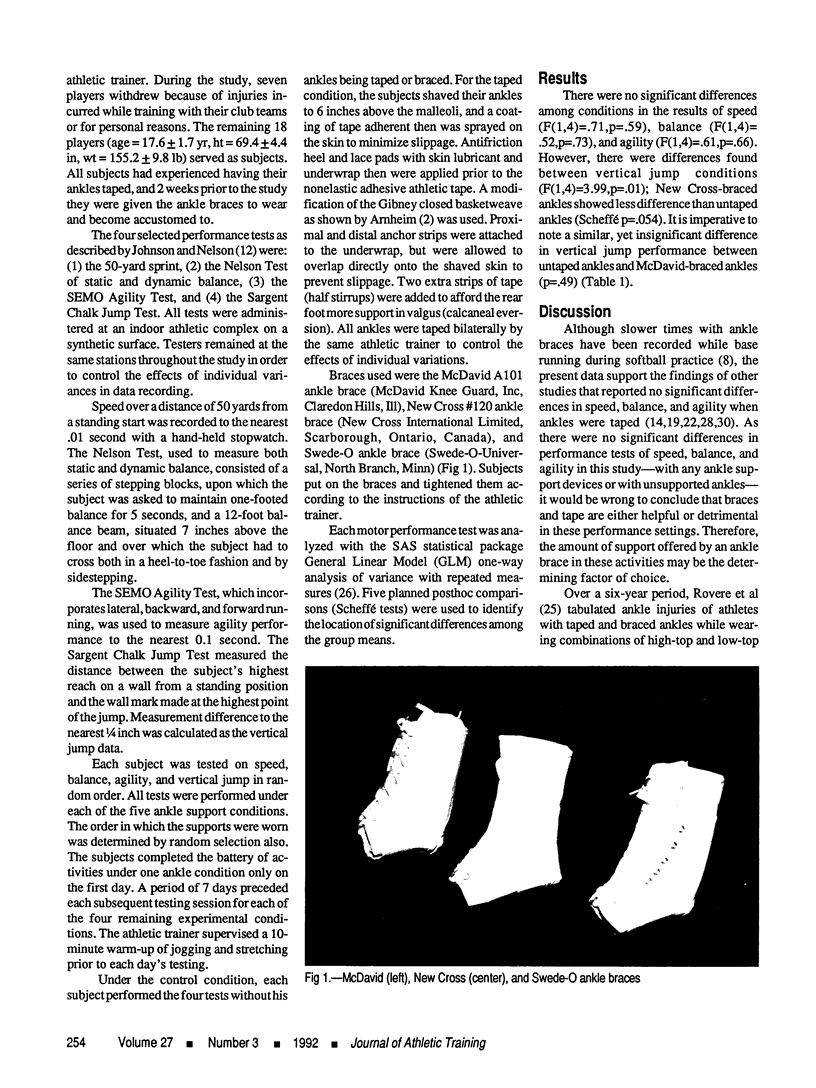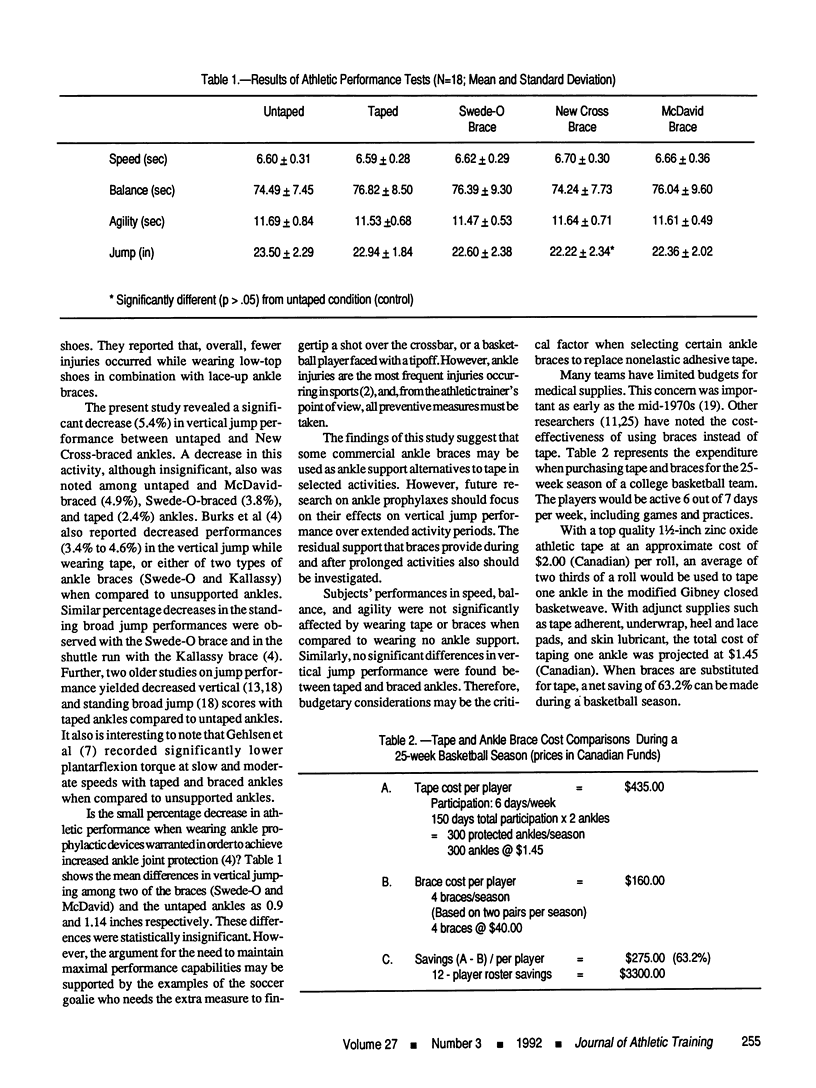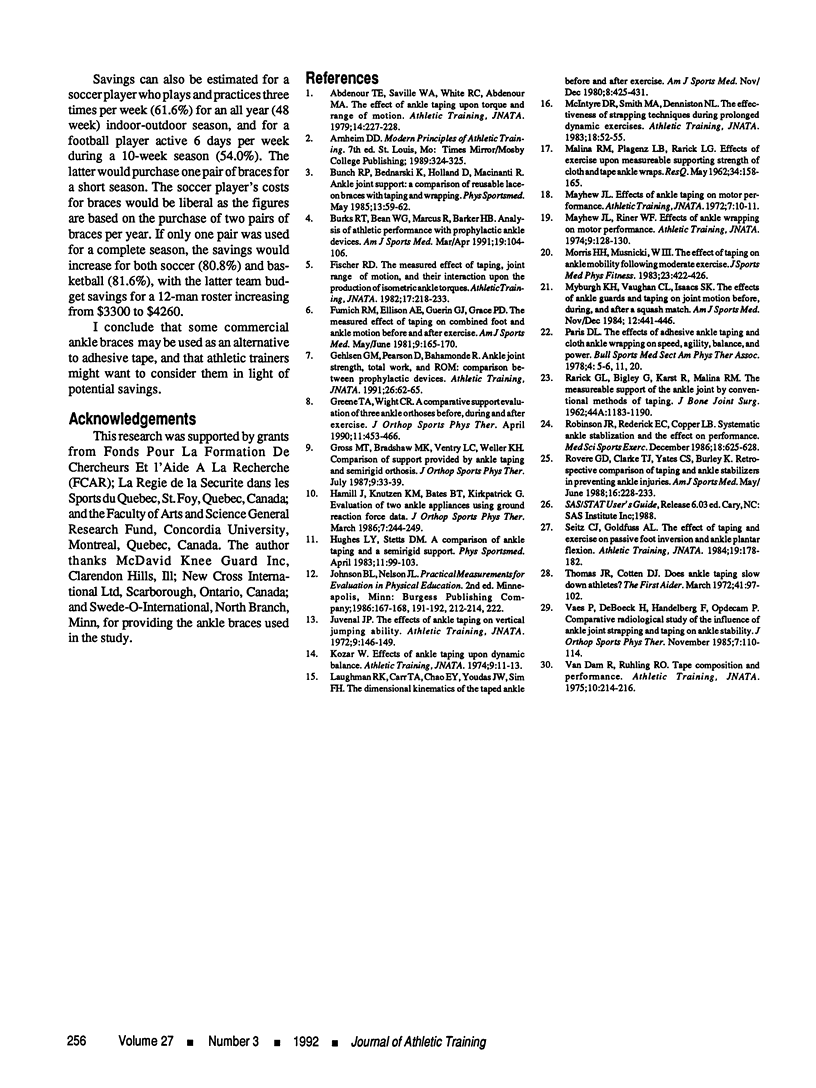Abstract
Scores from motor performance tests were compared using subjects with taped and untaped ankles. Previous studies have shown that taped ankle support may be detrimental in vertical and standing broad jumping performance. Conflicting data have been published on the effects of commercial ankle braces on various motor tasks. The performances of 18 elite soccer players in selected tests of speed, balance, agility, and vertical jumping were compared under conditions of untaped, nonelastic adhesive taped, Swede-O-braced, New Cross-braced, and McDavid-braced ankles. Vertical jump performance was significantly reduced when subjects wore New Cross braces. There were no significant differences in tests of speed, balance, and agility among any of the support conditions. Until now, nonelastic adhesive tape has been the preferred method of prophylactic ankle support. I conclude that certain commercial ankle braces may be used as a support alternative during selected activities.
Full text
PDF



Images in this article
Selected References
These references are in PubMed. This may not be the complete list of references from this article.
- Buchman R. J., Thomas P. A., Jr, Park B. Carotid artery injuries. Follow-up of fifteen patients treated in Viet Nam. Angiology. 1972 Feb;23(2):97–102. doi: 10.1177/000331977202300204. [DOI] [PubMed] [Google Scholar]
- Burks R. T., Bean B. G., Marcus R., Barker H. B. Analysis of athletic performance with prophylactic ankle devices. Am J Sports Med. 1991 Mar-Apr;19(2):104–106. doi: 10.1177/036354659101900202. [DOI] [PubMed] [Google Scholar]
- Fumich R. M., Ellison A. E., Guerin G. J., Grace P. D. The measured effect of taping on combined foot and ankle motion before and after exercise. Am J Sports Med. 1981 May-Jun;9(3):165–170. doi: 10.1177/036354658100900307. [DOI] [PubMed] [Google Scholar]
- Laughman R. K., Carr T. A., Chao E. Y., Youdas J. W., Sim F. H. Three-dimensional kinematics of the taped ankle before and after exercise. Am J Sports Med. 1980 Nov-Dec;8(6):425–431. doi: 10.1177/036354658000800608. [DOI] [PubMed] [Google Scholar]
- Myburgh K. H., Vaughan C. L., Isaacs S. K. The effects of ankle guards and taping on joint motion before, during, and after a squash match. Am J Sports Med. 1984 Nov-Dec;12(6):441–446. doi: 10.1177/036354658401200607. [DOI] [PubMed] [Google Scholar]
- RARICK G. L., BIGLEY G., KARST R., MALINA R. M. The measurable support of the ankle joint by conventional methods of taping. J Bone Joint Surg Am. 1962 Sep;44-A:1183–1190. [PubMed] [Google Scholar]
- Robinson J. R., Frederick E. C., Cooper L. B. Systematic ankle stabilization and the effect on performance. Med Sci Sports Exerc. 1986 Dec;18(6):625–628. [PubMed] [Google Scholar]
- Rovere G. D., Clarke T. J., Yates C. S., Burley K. Retrospective comparison of taping and ankle stabilizers in preventing ankle injuries. Am J Sports Med. 1988 May-Jun;16(3):228–233. doi: 10.1177/036354658801600305. [DOI] [PubMed] [Google Scholar]



